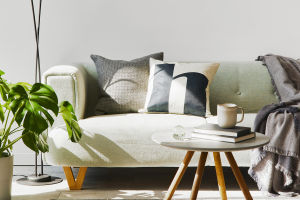Decorating doesn’t always mean buying something brand new. Sometimes, the most stylish pieces are the ones that already exist in your home. Repurposing, or upcycling, gives old furniture a fresh look while saving money and reducing waste.
With a little creativity, that scratched coffee table, worn chair, or unused dresser can become a statement piece. Upcycling also allows you to add personal touches that reflect your unique taste. The best part? You don’t need to be a professional to make it work. This guide will walk you through practical ideas and easy steps to give tired furniture a brand-new life.
Preparing Old Pieces for Upcycling
Before diving into transformations, preparation is key. Proper planning ensures your project looks polished and lasts longer.
Choose the Right Piece
Look for sturdy furniture with good structure. Even if it has scratches or outdated finishes, solid wood or metal pieces often upcycle beautifully. Avoid items with major damage unless you’re ready for a bigger project.
Clean Thoroughly
Years of dust or grime can build up on older pieces. Start by wiping everything down with gentle cleaners. A clean surface makes painting, staining, or refinishing much easier.
Assess the Style Potential
Think about what the piece could become. Could that old dresser work as a TV stand? Might a chair with worn fabric look amazing with a bold new cover? Envisioning its potential helps guide your design choices.
Gather Supplies
Basic tools like sandpaper, brushes, or fabric are often all you need. Having everything ready before you start makes the process smoother and more enjoyable.
Renewing Furniture: A Short, Doable Guide
Before you start (2 mins): Ventilated area, drop cloth, mask. Basic kit: cleaner, 180–220 grit sandpaper, primer, paint/stain, topcoat, brush/foam roller, screwdriver.
1) Fast Paint Refresh (wood cabinets/tables)
1. Clean & scuff-sand (180–220 grit).
2. Fill small dents, sand flush.
3. Prime (bonding for slick/laminate; stain-blocking for dark woods).
4. Paint 2–3 thin coats; finish with a clear topcoat.
Result: Color update + smoother finish in one afternoon.
2) Natural Wood Refinish (solid wood tops/legs)
1. Sand 120→180→220 (with the grain).
2. Fill chips; final dust wipe.
3. Optional stain; let dry.
4. Seal 2–3 coats (light sand 320 between).
Result: Fresh wood tone with durable protection.
3) Quick Seat Re-Cover (dining chairs/benches)
1. Unscrew seat; assess/replace foam if flat.
2. Cut fabric (3–4" margin).
3. Staple center-out; tidy corners.
4. Reattach seat; add felt pads.
Result: Instant comfort + texture pop.
4) Metal Frames (stools/bed frames/outdoor)
1. Wire-brush rust; degrease.
2. Rust-inhibiting metal primer (light coats).
3. Spray paint in thin passes.
4. Optional clear coat for outdoors.
Result: Clean, uniform, chip-resistant finish.
Tiny Troubleshooting
• Bleed-through/yellowing: spot-prime with shellac primer.
• Sticky surface: let it cure longer.
• Finish pick: satin = modern, semi-gloss = tougher.
Creative Upcycling Ideas
Once your piece is prepared, it’s time to let creativity shine. You don’t have to be an expert—just think outside the box.
Paint for a Bold Update
A fresh coat of paint can completely change the look of furniture. Try bright colors for a playful vibe, or muted tones for a modern, sleek style. Adding patterns with stencils gives an artistic touch without much effort.
Repurpose for New Uses
Think beyond the furniture’s original purpose. An old ladder can become a bookshelf, while a dresser might transform into a bathroom vanity. Repurposing lets you create functional pieces tailored to your needs.
Refresh with Fabric
If a chair or bench looks tired, re-cover the cushions with new fabric. Choose prints or textures that match your space. This simple update instantly adds comfort and style.
Add Details for Character
Changing handles, knobs, or legs can dramatically update a piece. Sleek metal handles modernize an old cabinet, while wooden knobs give it a rustic feel. Small details make a big impact.
Mix Old and New
Combine vintage furniture with modern décor elements. For example, pair a painted antique table with minimalist chairs. This blend creates a balanced, stylish look while honoring the charm of older pieces.
Repurposing furniture is about creativity, sustainability, and personal expression. By carefully preparing your piece—choosing wisely, cleaning thoroughly, and envisioning its potential—you set the stage for success. Then, with ideas like painting, repurposing, re-covering, or updating details, you can turn outdated items into treasures. Not only do you save money and reduce waste, but you also create one-of-a-kind décor that tells a story. Every old piece has potential waiting to be unlocked. With a little imagination, your home can shine with style and character, all while giving new life to what you already own.


